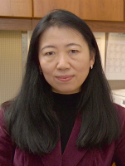| Abstract: |
Pancreatic ductal adenocarcinoma (PDAC) is a highly lethal cancer, often diagnosed at stages that dis-qualify for surgical resection. Neoadjuvant therapies offer potential tumor regression and improved resectability. Although features of the tumor biology (e.g., molecular markers) may guide adjuvant therapy, biological alterations after neoadjuvant therapy remain largely unexplored. We performed mass spectrometry to characterize the proteomes of 67 PDAC resection specimens of patients who received either neoadjuvant chemo (NCT) or chemo-radiation (NCRT) therapy. We employed data-independent acquisition (DIA), yielding a proteome coverage in excess of 3500 proteins. Moreover, we successfully integrated two publicly available proteome datasets of treatment-naïve PDAC to unravel proteome alterations in response to neoadjuvant therapy, highlighting the feasibility of this approach. We found highly distinguishable proteome profiles. Treatment-naïve PDAC was characterized by enrichment of immunoglobulins, complement and extracellular matrix (ECM) proteins. Post-NCT and post-NCRT PDAC presented high abundance of ribosomal and metabolic proteins as compared to treatment-naïve PDAC. Further analyses on patient survival and protein expression identified treatment-specific prognostic candidates. We present the first proteomic characterization of the residual PDAC mass after NCT and NCRT, and potential protein candidate markers associated with overall survival. We conclude that residual PDAC exhibits fundamentally different proteome profiles as compared to treatment-naïve PDAC, influenced by the type of neoadjuvant treatment. These findings may impact adjuvant or targeted therapy options. © 2024 The Authors. International Journal of Cancer published by John Wiley & Sons Ltd on behalf of UICC. |



